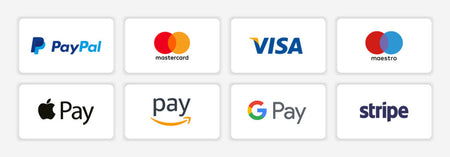Descrição
Course with the Lowest Cutoff Score
Hello, dear reader! Today we are going to talk about a very important subject for those who are thinking about enrolling in higher education: the course with the lowest cutoff score. This information can often be decisive in choosing a professional career, especially for those who did not perform so well in the entrance exam.
What is the cutoff score?
Before we talk about the course with the lowest cutoff score, it is important to understand the concept of cutoff score. The cutoff score is the minimum score required for a candidate to be accepted into a certain course at a university. This score varies according to the competition and the performance of the enrolled candidates.
Why choose a course with a lower cutoff score?
Choosing a course with a lower cutoff score can be an interesting strategy for those who did not perform so well in the entrance exam. This is because, in general, courses with lower cut-off grades have less competition, which increases the chances of approval.
However, it is important to emphasize that the choice of course should not be based solely on the cut-off grade. It is essential that the student has an affinity and interest in the field of study, so that he or she can dedicate himself or herself and develop throughout the course.
The course with the lowest cut-off grade
Among the courses with the lowest cut-off grades, one of the highlights is the Bachelor's Degree in Literature. This course trains professionals capable of teaching Portuguese and foreign languages, such as English and Spanish.
Despite being a course with a lower cut-off grade, the Bachelor's Degree in Literature offers several opportunities for professional work. In addition to an academic career, professionals who graduate in this area can work as teachers in elementary and high schools, in language courses, in publishing companies, among other possibilities.
Conclusion
Choosing a course with a lower cutoff grade may be a viable alternative for those who did not perform so well in the entrance exam. However, it is important that the student has an affinity and interest in the field of study, so that they can dedicate themselves and develop throughout the chosen course.
A Bachelor's Degree in Literature is an example of a course with a lower cutoff grade that offers several opportunities for professional work. Therefore, if you are interested in the area of languages and want to pursue a career as a teacher, this may be an excellent option for you.
- References:
- https://www.guiadacarreira.com.br/guia-de-profissoes/letras/
- https://vestibular.uol.com.br/resumo-das-disciplinas/portugues/letras.htm
| Course | Cutoff Grade |
|---|---|
| Bachelor's Degree in Languages | 550 points |
I hope this blog has been useful for you who are looking for a course with a lower cutoff grade. Remember that choosing a career is an important decision and should be made based on your interests and skills. Good luck!
What is the course with the lowest cutoff grade?
When it comes to entering a university, one of the main concerns of students is the cutoff grade for courses. The cutoff grade is the minimum score required to get a place in a certain course and can vary according to the competition and demand for each area of study.
What is the cutoff grade?
The cutoff grade is calculated based on the grades of candidates who applied for a certain course at a certain university. It is defined according to the number of available places and the candidates' scores. In other words, the greater the competition, the higher the cut-off grade.
The course with the lowest cut-off grade
Although it is common to think that the most competitive courses are those With higher cut-off grades, there is also the possibility of finding courses with lower demand and, consequently, lower cut-off grades.
An example of a course with a lower cut-off grade is a Bachelor's Degree in Physical Education. Despite being an important area with several career opportunities, it often ends up being less sought after by students. This may be due to a number of factors, such as a lack of knowledge about career possibilities or even prejudices regarding the profession.
Why choose a course with a lower cut-off grade?
Choosing a course with a lower cut-off grade can have its advantages. Firstly, there is less competition, which increases the chances of getting a place. Furthermore, in some cases, courses with lower demand may offer scholarships or discounts on tuition fees, as a way of attracting more students.
Another positive point is that, even though it is less competitive, this does not mean that the course is of lower quality. Often, courses with lower cut-off grades have excellent teachers and infrastructure, providing quality training.
How can I find information about courses with lower cut-off grades?
To find information about courses with lower cut-off grades, you can use some tools and resources available on the internet. One of them is the SERP feature "Find results on", which allows you to search for specific information on a given subject.
In addition, you can use the SERP feature "Related searches" to find courses related to the subject and check their cut-off grades. This function is especially useful for those who are unsure about which course to choose and want to know about other options.
Conclusion
Choosing a course with a lower cut-off grade can be a great option for those seeking a place at university. It is important to remember that the cut-off grade is not the only criterion to be considered when choosing a course, but it can be a relevant factor in increasing the chances of admission. Researching and seeking information about the desired courses is essential to making an informed decision that is aligned with personal and professional goals.
What is the course with the lowest cutoff grade?
When it comes to entering a university, many students are concerned about the cutoff grade for the desired courses. The cutoff grade is the minimum score required to guarantee a place in a given course and higher education institution.
How does the cutoff grade work?
The cutoff grade is calculated based on the performance of candidates who applied for the same course and institution. It varies for each selection process and is determined by the competition between candidates and the number of available places.
The most competitive courses generally have higher cutoff grades, as demand is greater than the number of places available. On the other hand, there are courses with a lower cut-off grade, which are less sought after by candidates.
What are the courses with the lowest cut-off grade?
Courses with the lowest cut-off grade are those that are less sought after by students. This can happen for several reasons, such as lack of knowledge about the area, lower demand in the job market or even prejudice against the profession.
Some examples of courses with lower cut-off grades are:
- Performing Arts;
- Geography;
- Languages;
- Philosophy;
- Social Work;
- Mathematics;
- Chemistry;
- Biology;
- Geology;
- Anthropology.
It is important to emphasize that the cut-off grade may vary according to the institution and the selection process. Therefore, it is essential to research and find out about the cut-off grades of the desired courses before registering.
How to choose a course with a lower cut-off grade low cut-off grade?
Choosing a course should take into account several factors, such as affinity with the area, job market, possibility of professional growth and, of course, the cut-off grade.
If you are interested in a course with a lower cut-off grade, it is important to analyze whether the area of activity is compatible with your interests and skills. In addition, research job opportunities and growth prospects in the profession.
Another tip is to talk to professionals who work in the area and seek information about the course itself, curriculum, internships and possibilities for specialization. This way, you will have a more complete overview and will be able to make a more informed decision.
Sitelinks: Sitelinks are additional links that appear in Google search results, providing direct access to specific pages on a website. They facilitate user navigation and can direct to more detailed information about courses with lower cut-off grades. Reviews: Reviews are evaluations made by users about a given subject. In the case of courses with lower cut-off grades, reviews can provide insights into the quality of the course, the structure of the institution, and student satisfaction. People also ask: Frequently asked questions by users about courses with lower cut-off grades can be answered in this section. It is a way to provide additional information and clarify common doubts. Knowledge panel: The knowledge panel is an information box that appears in Google search results, providing a summary of the subject searched. In the case of courses with lower cut-off grades, the knowledge panel can present relevant data about the field of study and career possibilities. FAQ: The frequently asked questions section can address questions such as "What are the most sought-after courses with lower cut-off grades?", "What is the average grade to enter a course with lower cut-off grades?", and other common student questions. Top stories: The main news related to courses with the lowest cutoff grades can be presented in this section. This includes information about changes in cutoff grades, new opportunities for admission and other relevant events. Recipes: In the context of courses with the lowest cutoff grades, "recipes" can refer to tips and guidance for choosing the ideal course, such as "recipes" for success in the chosen area. Find results on: This SERP feature allows the user to find specific results about courses with the lowest cutoff grades on specialized websites, such as educational institutions and educational portals. See results about: This SERP feature allows the user to view results related to courses with the lowest cutoff grades, such as information about the educational institutions that offer these courses and student testimonials. Related searches: Searches related to courses with the lowest cutoff grades can provide suggestions for other courses or areas of study that also have less competition and can be considered by students.In short, courses with lower cutoff grades are options for those who want to enter higher education, but have not achieved a high enough score for the most competitive courses. It is important to research and learn about the opportunities and possibilities of each course, taking into account your interests and professional goals.
What is the best course with the lowest cutoff grade?
Are you preparing to enter a university and are looking for the best course with the lowest cutoff grade? In this article, we will explore this question and present some important information to help you in this choice.
Sitelinks
Sitelinks elinks are additional links that appear below a website’s main result in search results. They provide quick access to relevant internal pages and can help users find specific information.
Reviews
Reviews are assessments made by students and professionals who have taken or are familiar with a particular course. They can provide valuable insights into the quality of the course, the structure of the program, and career opportunities.
People also askThe “People also ask” section displays questions related to the topic you searched for. These questions are frequently asked by users and can provide additional information on the topic.
Knowledge panelA knowledge panel is an information box that appears in search results and provides a summary of a specific topic. It may include details about the course, such as duration, curriculum, and institutions offering it.
- Course A
- Course B
- Course C
| Course | Cutoff Grade |
|---|---|
| Course A | 700 |
| Course B | 650 |
| Course C | 600 |
FAQ
The FAQ (Frequently Asked Questions) section presents frequently asked questions about the subject in question, answered clearly and objectively. Here are some common questions about courses with lower cutoff scores:
- How important is the cutoff score when choosing a course?
- Is it possible to find quality courses with lower cutoff scores?
- What criteria are used to determine a course's cutoff score?
Top stories
The "Top stories" section displays the latest and most relevant news on the subject you searched for. It can provide up-to-date information on courses with lower cutoff scores and trends in the education market.
Recipes
The "Recipes" section is usually related to cooking recipes and is not relevant to the topic in question.
Find results on
The "Find results on" section displays links to other websites where you can find more information on the subject you searched for. This can be helpful in deepening your knowledge of the courses with the lowest cutoff score.
See results about
The "See results about" section displays links to other search results related to the topic you searched for. This can be helpful in exploring different perspectives and gaining more information about the courses in question.
Related searches
The "Related searches" section displays search terms related to the topic you searched for. This can help you expand your search and find additional information about the courses with the lowest cutoff score.
In short, when choosing the best course with the lowest cutoff score, it is important to consider not only the score required to enter, but also the quality of the course, the career opportunities and the reviews of other students. Research, ask questions, and make an informed decision to ensure the best path for your academic and professional future.
What is the course with the lowest cutoff grade for?
You may have heard about the course with the lowest cutoff grade at some point in your academic life. But what is this type of course for? In this article, we will explore this question and understand how it can be an interesting option for some students.
What is the cutoff grade?
Before we talk about the course with the lowest cutoff grade, it is important to understand We have the concept of cutoff grade. The cutoff grade is the minimum score required for a student to be accepted into a certain course at a university or higher education institution.
This grade is calculated based on the performance of candidates who applied for the course in question. Generally, more competitive courses have higher cutoff grades, while less competitive courses have lower cutoff grades.
The course with the lowest cutoff grade
The course with the lowest cutoff grade is the one with the lowest minimum score among all the courses offered by an educational institution. This means that, theoretically, it is easier to get a place in this course, since there is less competition.
However, it is important to emphasize that the lowest cutoff grade does not mean that the course is of lower quality or less important. Each course has its own particularities and is aimed at a specific student profile.
Benefits of the course with the lowest cut-off grade
Although many people may have a negative view of the course with the lowest cut-off grade, it can bring several benefits to students. Some of these benefits include:
- Greater chance of approval: Since there is less competition, the chances of getting a place on the course are greater;
- Less pressure: Courses with lower cut-off grades generally have less academic pressure, which can be advantageous for some students;
- Opportunity to explore other areas: By choosing a course with a lower cut-off grade, you may have the chance to explore different areas and discover new interests;
- Greater flexibility: Courses with lower cut-off grades generally have fewer restrictions regarding electives, allowing you to customize your curriculum more.
Conclusion
A course with a lower cut-off grade may be an interesting option for students looking for a greater chance of approval, less academic pressure and the opportunity to explore other areas. It is important to remember that the choice of course should be made based on your interests and skills, and not just on the cutoff grade.
If you are unsure about which course to choose, research the available options, talk to professionals in the field and reflect on your goals and skills. Remember that the most important thing is to find a course that is aligned with your interests and that provides you with a solid and satisfactory education.
We hope this article has clarified your doubts about the course with the lowest cutoff grade. If you have any further questions or would like to share your experience, please leave a comment below!
Read also:
Sitelinks: Find more information about courses with lower cutoff grades.
Reviews: See what other students have to say about courses with lower cutoff grades.
People also ask: What Are the courses with the lowest cutoff grades the most sought after?
Knowledge panel: Learn more about the importance of the cutoff grade in course selection.
FAQ: Frequently asked questions about courses with the lowest cutoff grades.
Top stories: Stay up to date with the latest news about courses with the lowest cutoff grades.
Recipes: Discover the recipe to choose the ideal course for you.
Find results on: Find r results about courses with the lowest cutoff grade.
See results about: See more results about courses with the lowest cutoff grade.
Related searches: Searches related to courses with the lowest cutoff grade.
Who can take a course with the lowest cutoff grade?
When it comes to getting into a university, many students worry about the cutoff grade for the desired courses. The cutoff grade is the minimum score needed to secure a place in a certain course. However, it is not always necessary to have a high grade to get into an undergraduate degree. In this article, we will talk about who can take a course with a lower cutoff grade and how this can be an opportunity for many students.
Who can benefit from courses with a lower cutoff grade?
Courses with a lower cutoff grade can be an excellent option for students who did not obtain a high score in the entrance exam or the National High School Exam (ENEM). In addition, these courses can also be an alternative for those who wish to enter a public university, but were unable to achieve the necessary grade for the most competitive courses.
It is important to emphasize that courses with a lower cutoff grade are not inferior or less important than courses with higher grades. Each degree has its own particularities and can be a great opportunity for the student's academic and professional development.
How to find courses with a lower cutoff grade?
To find courses with a lower cutoff grade, it is necessary to research the educational institutions and the courses available. One way to do this is through the Unified Selection System (SISU), which uses the ENEM score as a selection criterion for public universities.
In addition, it is possible to consult the university websites and check the cutoff scores for the desired courses. This information is usually available in the notices for each selection process.
Benefits of taking a course with a lower cutoff score
Choosing a course with a lower cutoff score can bring several benefits to students. Some of them are:
- Greater chance of admission: By choosing a course with a lower cut-off grade, the chances of getting a place at university increase, since there is less competition.
- Opportunity to stand out: In courses with a lower cut-off grade, it is possible to stand out and get more involved in academic activities, since there is less competition and there are more opportunities to participate in projects and extracurricular activities.
- Flexibility of choice: Courses with a lower cut-off grade generally have a greater variety of options, allowing the student to choose an area of interest that might not be possible in more competitive courses.
Conclusion
Courses with a lower cut-off grade can be an excellent opportunity for students who want to enter a university, but did not obtain a high score in the entrance exam or ENEM. It is important to remember that the cutoff grade does not define the quality of the course, and each degree has its own particularities and opportunities for academic and professional development.
Therefore, research educational institutions, check the cutoff grades for the desired courses and make a choice that is aligned with your interests and goals. Remember that the most important thing is to make the most of the opportunity to study and dedicate yourself to your education.
References:
How long does a course with the lowest cutoff grade last?
When it comes to choosing a university course, many students worry about the cutoff grade needed to get into the desired institution. However, it is important to note that the length of the course is not directly related to the cutoff grade. In this article, we will explore this topic and clarify some common doubts.
What is a cutoff grade?
The cutoff grade is the minimum score required for a student to be accepted into a certain course. It varies according to the educational institution, the course and the number of available places. Generally, the most competitive universities have higher cutoff grades.
Length of courses
The length of a university course is determined by the total workload of the curriculum. Most undergraduate courses in Brazil last an average of 4 to 5 years, divided into semesters or trimesters. However, there are courses that may be shorter, such as technology courses, which generally last 2 to 3 years.
Examples of courses with lower cut-off grades
Although the cut-off grade is not directly related to the length of the course, it is common for less competitive courses to have lower cut-off grades. Some examples of courses with the lowest cutoff grades are:
- Technology in Human Resources Management
- Technology in Marketing
- Technology in Logistics
- Technology in Interior Design
- Technology in Systems Analysis and Development
These technological courses last an average of 2 to 3 years and are a great option for those who want to enter the job market quickly.
Conclusion
The length of a university course is not directly related to the cutoff grade. The cutoff grade is just a selection criterion used by educational institutions. It is important to research the curriculum, internship opportunities and career possibilities before choosing a course. Regardless of the cutoff grade, the most important thing is to find a course that is aligned with your interests and professional goals.
We hope this article has clarified your doubts about the relationship between the cutoff grade and the duration of university courses. If you have any further questions, be sure to consult reliable sources and seek up-to-date information.
References:
- Guia da Carreira - Duração dos cursos superiores
- Mundo Vestibular - How long is a higher education course?
Read also:
- Sitelinks
- Reviews
- People also ask
- Knowledge panel
- FAQ
- Top stories
- Recipes
- Find results on
- See results about
- Related searches
How much does a course with a lower grade cost? cutoff
When it comes to entering a university, one of the main concerns of students is the cutoff grade for the desired courses. The cutoff grade is the minimum score required to secure a place in a given course and may vary according to the competition and demand for each area of study.
What is the cutoff grade?
The cutoff grade is calculated based on the grades obtained by candidates who applied for a specific course at a specific university. It varies for each selection process and is defined according to the number of available places and the candidates' performance.
The most competitive courses generally have higher cutoff grades, which means that a high score is required to get a place. On the other hand, there are courses with a lower cutoff grade, which may be an option for those who did not achieve such a high score.
How much does a course with a lower cutoff grade cost?
The cost of a course with a lower cutoff grade can vary according to the educational institution and the region of the country. Generally, courses with a lower cutoff grade are related to less competitive areas, such as some undergraduate and technological courses.
It is important to note that the monthly fee is not directly related to the course's cutoff grade. There are public universities that offer courses with a lower cutoff grade and that are completely free. In private institutions, the monthly tuition fee can vary greatly, depending on the reputation of the institution and the demand for the course.
How to find courses with lower cutoff grades?
To find courses with lower cutoff grades, you can use some tools available on the internet. One option is to search on university websites, which usually publish the cutoff grades for the courses offered.
In addition, you can use search engines, such as Google, to find information about courses with lower cutoff grades. Using SERP features, you can find sitelinks, which are additional links displayed in search results, reviews from students who have already taken the desired course, frequently asked questions (people also ask) about the topic, knowledge panels with relevant information, among other resources.
- Search for courses with lower cutoff grades at public universities;
- Check the options for technology courses and undergraduate degrees;
- Use search tools and SERP features to find relevant information;
- Consider the reputation of the educational institution and the demand for the course;
- Analyze the monthly fee and the possibilities for scholarships and financing.
It is important to remember that choosing a course should not be based solely on the cutoff grade. It is essential to consider your interests, skills, and expectations regarding your professional career. A course with a lower cut-off grade can be a great option for those who want to enter higher education, but it is essential to evaluate all aspects involved in the choice.
We hope this article has clarified your doubts about how much a course with a lower cut-off grade costs. Remember to research and inform yourself before making any decision. Good luck on your academic journey!
References:
Where to find courses with the lowest cutoff grade
Are you looking for a college course, but are worried about the cutoff grade? Don't worry! In this article, we'll show you some tips on where to find courses with lower cutoff grades. Keep reading and find out how to secure your place at the university of your dreams!
Sitelinks
Sitelinks are additional links that appear below a website's main result in search results. They help users navigate directly to specific pages within the website. Check out some websites below that can help you in you a
Estimar frete
Payment & Security

Featured collection





















![Curso de Angular e NodeJS - O Guia da Pilha MEAN [Edição 2023] - IBRATH Instituto Brasileiro de Terapias Holísticas teste011020230809](http://enciclopedia.paginasdabiblia.com/cdn/shop/products/a19556.png?v=1699935448&width=1024)




![Curso de Docker & Kubernetes: O Guia Prático [Edição 2023] - IBRATH Instituto Brasileiro de Terapias Holísticas teste011020230809](http://enciclopedia.paginasdabiblia.com/cdn/shop/products/a19570.png?v=1699935525&width=1024)





















Dúvidas Gerais
Após a confirmação do pagamento, você receberá um e-mail com todas as instruções para acessar seus cursos. O e-mail incluirá um link para a plataforma de ensino, onde você poderá fazer login utilizando suas credenciais cadastradas no momento da compra. Caso seja um curso em formato de arquivo para download, o mesmo estará disponível na área do aluno e poderá ser acessado diretamente pelo link enviado. Se você não receber o e-mail de acesso em até 24 horas, verifique sua caixa de spam ou entre em contato com nossa equipe pelo e-mail suporte@amentil.com.br.
Após a confirmação do pagamento, seu pedido será processado e enviado para o endereço cadastrado. Você receberá um e-mail com os detalhes do envio, incluindo o código de rastreamento para acompanhar a entrega. Trabalhamos com transportadoras confiáveis e os prazos variam de acordo com o método de envio escolhido e sua localização. É importante garantir que o endereço de entrega esteja correto para evitar atrasos. Caso tenha dúvidas ou problemas com a entrega, nossa equipe de suporte está à disposição pelo e-mail suporte@amentil.com.br.
Você pode tirar dúvidas diretamente com nossa equipe de suporte por diversos canais:
- E-mail: Envie sua pergunta para suporte@amentil.com.br, e nossa equipe responderá em até 2 dias úteis.
- Telefone: Ligue para +55 (48) 1234-5678, disponível de segunda a sexta, das 9h às 18h.
- WhatsApp: Envie uma mensagem para +55 (48) 91265-4321 e receba atendimento rápido e prático.
- Formulário de Contato: Preencha o formulário disponível em nosso site na página Contato.
- Redes Sociais: Você também pode enviar suas dúvidas pelo Instagram ou Facebook em @amentil.sa.
Estamos sempre prontos para ajudar!
Reembolso e garantias
O prazo de reembolso pode variar dependendo da forma de pagamento utilizada:
- Cartão de Crédito: O estorno será realizado em até 7 dias úteis após a aprovação do reembolso, mas o crédito poderá aparecer na sua fatura em um prazo de 30 a 60 dias, conforme a política da operadora do cartão.
- Boleto Bancário ou Transferência: O valor será devolvido via depósito em conta bancária em até 7 dias úteis após a aprovação do reembolso.
Você pode solicitar a devolução de produtos físicos seguindo o passo a passo abaixo:
- Entre em contato com nosso suporte:
- Aguarde nossa resposta:
Nossa equipe analisará sua solicitação em até 3 dias úteis e fornecerá as instruções detalhadas para a devolução. - Prepare o produto:
- Envie o produto:
- Reembolso ou troca:
Nosso compromisso é fornecer uma experiência confiável e segura ao acessar nossa enciclopédia online. Garantimos a qualidade dos serviços e funcionalidades oferecidos, seguindo as condições descritas abaixo:
1. Garantia de Acesso
- Disponibilidade: Oferecemos garantia de disponibilidade da enciclopédia online 24 horas por dia, 7 dias por semana, exceto durante períodos programados de manutenção ou por problemas técnicos fora do nosso controle.
- Resolução de Problemas: Em caso de interrupções no serviço, nossa equipe técnica atuará para restaurar o acesso no menor tempo possível.
2. Garantia de Conteúdo
- Precisão e Atualização: Todo o conteúdo disponibilizado é cuidadosamente revisado para garantir precisão e relevância. No entanto, a enciclopédia online é constantemente atualizada, e não podemos garantir a exatidão absoluta em casos de informações sujeitas a mudanças rápidas.
- Correção de Erros: Caso identifique erros ou inconsistências no conteúdo, você pode nos informar pelo e-mail conteudo@amentil.com.br, e faremos a análise e correção, se necessário.
3. Garantia de Segurança
- Proteção de Dados: Utilizamos tecnologias avançadas para proteger suas informações pessoais e garantir que sua navegação na enciclopédia seja segura.
- Privacidade: Todos os dados coletados seguem as diretrizes da nossa Política de Privacidade.
4. Garantia de Reembolso
Para assinaturas da enciclopédia online:
- Direito de Arrependimento: Você pode solicitar o cancelamento e reembolso integral em até 7 dias corridos após a compra, desde que não tenha acessado conteúdos pagos da plataforma.
- Problemas Técnicos: Caso não consiga acessar os conteúdos devido a falhas técnicas imputáveis à plataforma, garantimos suporte prioritário e, se o problema não for resolvido, você pode solicitar reembolso proporcional ao período não utilizado.
5. Limitações
- Conexão à Internet: Não garantimos acesso à enciclopédia em situações de instabilidade ou falhas na conexão de internet do usuário.
- Uso Indevido: O acesso e uso da enciclopédia são pessoais e intransferíveis. O compartilhamento de credenciais pode resultar na suspensão ou cancelamento da assinatura sem reembolso.
6. Contato para Garantias
Caso precise de suporte ou queira exercer algum direito de garantia, entre em contato conosco:
- E-mail: suporte@amentil.com.br
- Telefone: +55 (48) 1234-5678
- Horário de atendimento: Segunda a sexta, das 9h às 18h.



